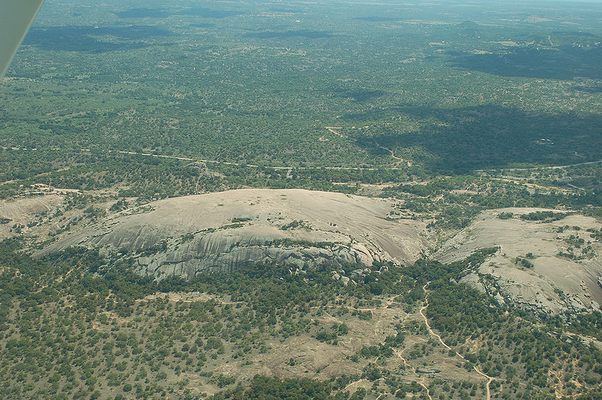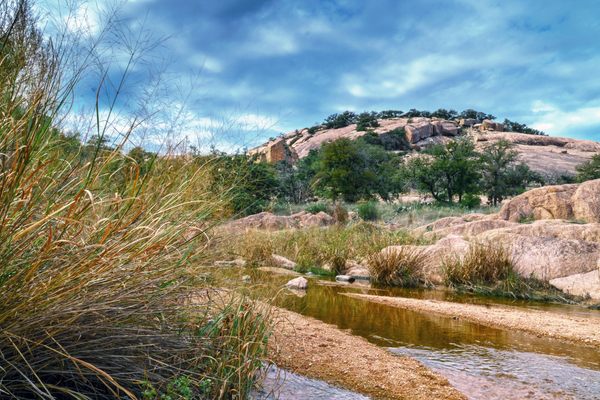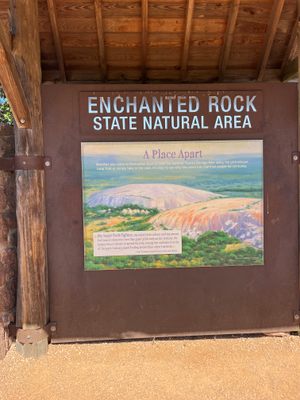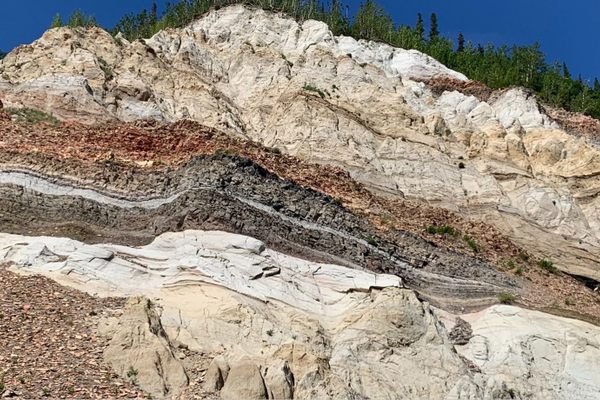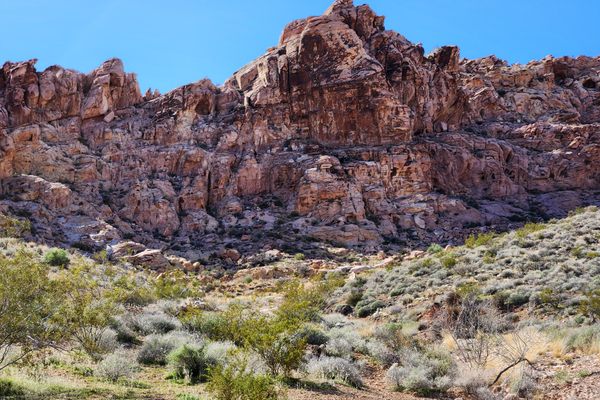About
Enchanted Rock, a pluton, or igneous rock intrusion, is a massive dome comprised of pink granite and rises 425 feet above the ground around it. This ancient monolith has been a part of human history for at least 11,000 years and covers a sprawling 640 acres. The name Enchanted Rock comes from an interpretation of Native American folklore and tradition by early Spanish and Anglo settlers.
Legends of Enchanted Rock abound, some predating the arrival of the Europeans, others including conquistadors and Anglo-Texans. One Tonkawa tradition holds that a group of braves, the last of their tribe, fought to the death on the top of Enchanted Rock defending themselves from another tribe. Another of the legends holds that a princess threw herself off the rock upon seeing her tribe being slaughtered. It is said that both the warriors and the princess' spirits haunt the granite monadnock. Tonkawa Indians also tell of phantom campfires atop the dome at night.
Part of the what makes the rock mysterious is that when a cool night follows a warm day, Enchanted Rock makes audible creaking noises. Though this is due to the contraction of the outer surface of the rock, it has likely fueled more legends which in turn increased the magical attributes ascribed to the batholith. Some say that the rock sparkles occasionally at night, most likely on damp nights with lots of moonlight.
Another fascinating feature of the rocks are the small pools of water (known as vernal pools) present in depressions on the rock. These pools are typically dry during the summer and fall months, yet house living marine animals such as tiny shrimps during the wetter spring. These pools also have miniature bogs of sorts surrounding them, in these there is a tiny species of quillwort (a vascular spore-bearing plant distantly related to ferns) found nowhere else in the world, there are also several plants found here that are only also found in Mexico.
The area is at a slightly higher elevation and will get significantly colder and slightly drier than nearby Austin and San Antonio, it lies within USDA zone 8a, and temperatures in the single-digits overnight are not unheard of, whereas the aforementioned cities nearby will scarcely graze 24 degrees on a cold night for the most part, snow however is infrequent but sometimes a dusting of an inch or so will fall. This is a unique chaparral environment created where the lowland subtropical forests of the southeast meet the high semiarid steppe of the west and the savannas of the Great Plains, it can be called dry-subtropical and gets just a few inches too much rain (29 about) to be classified officially as hot summer-Mediterranean (there are vineyards, lavender farms, and peach and olive groves just outside the park boundaries).
The rock contains a cave roughly 1500 feet long, one of the longest granite talus caves in the world, it is dark, wet, sometimes spidery, and tight, but free for anyone to explore if they are not afraid of tight spaces and things with lots of legs, you enter close to the summit and get spat out on the side of the dome overlooking a fantastic vista (there is a ton of poison ivy at that spot though so beware). Artifacts dating back 11,000 years or so have been found here, and it is easy to understand why; there is an abundance of spring water, food plants like pecans, Texas Persimmons, Mesquite, and prickly pear, lots of game animals, medicinal herbs, caves for shelter, and high quality tool flint (why leave, right?). There is even a rare semiprecious stone called Llanite which can be found here, though it is of course very, very illegal to remove any rocks from the park.
Camping is allowed at the Enchanted Rock State Natural Area, with convenient sites less than a 100 yards from the parking lot, to primitive campsites 1-3 miles out. Hiking, rock climbing, wildlife watching, and star gazing are among the popular activities at 1,644 acre Enchanted Rock State Natural Area. When you visit be sure to pick up any litter you see and to not step near any ferns (one is a very rare Mexican species), also, it gets HOT here so bring lots and lots of water.
Related Tags
Know Before You Go
The park is 18 miles north of Fredericksburg on Ranch Road 965, or from Llano, take State Highway 16 for 14 miles south and then go west on Ranch Road 965. The park will close to visitors when the parking lot fills up, so go early. The park generally opens at 8am.
Community Contributors
Added By
Edited By
Published
February 3, 2010





